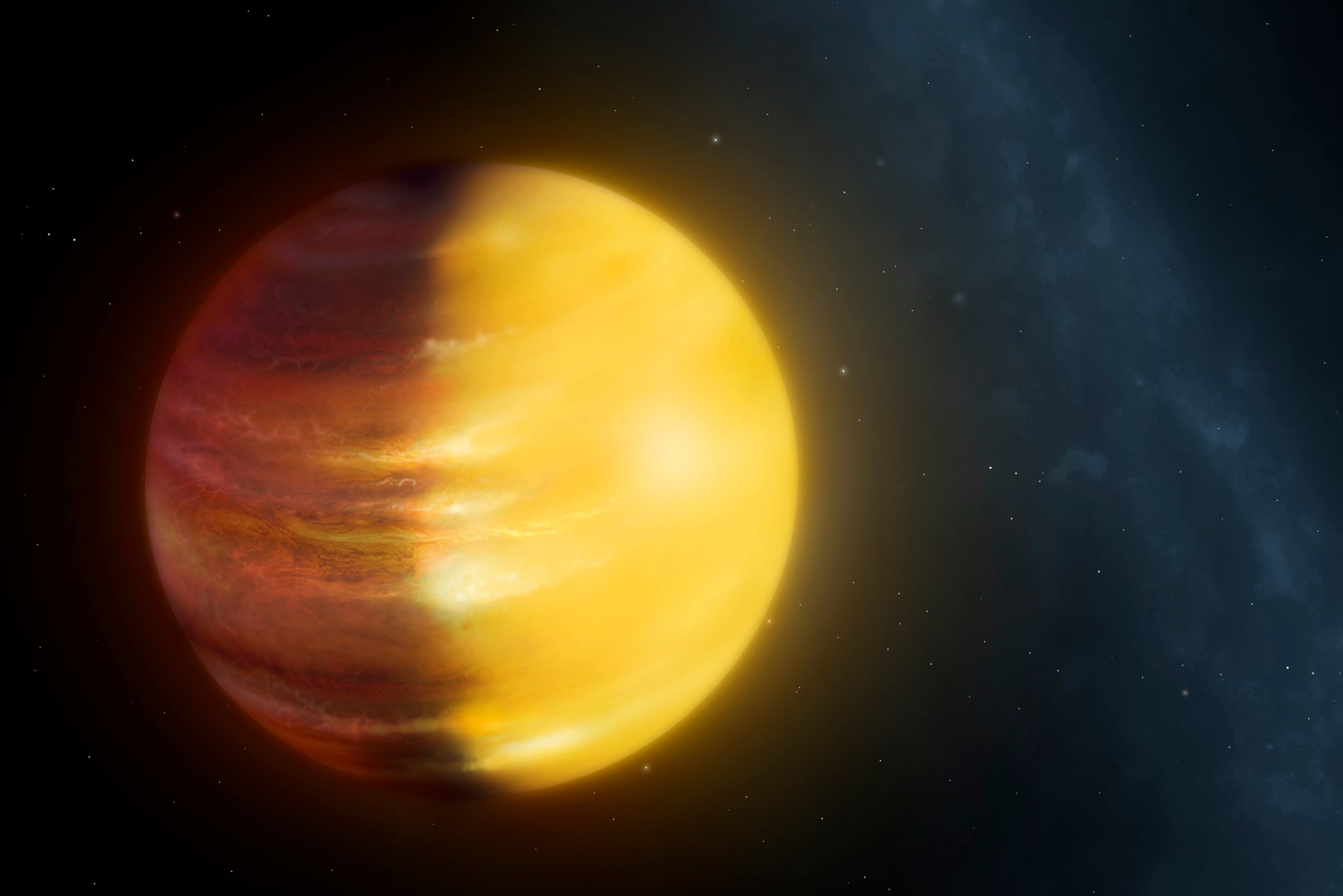Astronomers looking out to the sky have spotted an exoplanet that proves to break some records; in fact, it’s believed to be the second-hottest exoplanet ever discovered—and its circumstances give no reason to doubt its classification. These new findings were published in The Astronomical Journal.
The record-breaking planet is called TOI-2109b, and is a gas giant much like our planetary neighbors Jupiter and Saturn. It orbits a star some 855 light-years away from Earth. What’s different about it is the fact that TOI-2109b sits at a whopping five (5) times Jupiter’s mass, while also being 1.35 times Jupiter’s size—and that’s not even the last of its unique metrics.
It’s hypothesized that TOI-2109b’s surface temperatures can reach a sweltering 3,227 °C (5,840 °F); toss every naturally-occurring element of the periodic table in it and only tungsten (W) and carbon (C) will remain solid—everything else is either molten or vaporized. There are stars whose surfaces are colder than TOI-2109b’s surface.
And it’s not much of a surprise as to why, as this particular oddball exoplanet orbits so close to its host star that it whips itself around its orbit once every 16 hours, making its orbit the closest we’ve ever discovered for an exoplanet. TOI-2109b sits at just 2.4 million km (1.5 million mi) away from its host star—which, admittedly, sounds like a lot at first, but not for long once you realize that it’s 23 times closer to its own star than Mercury is to our own.
It’s not much of a surprise as to why, as this particular oddball exoplanet orbits so close to its host star that it whips itself around its orbit once every 16 hours, making its orbit the closest we’ve ever discovered for an exoplanet. TOI-2109b sits at just 2.4 million km (1.5 million mi) away from its host star—which, admittedly, sounds like a lot at first, but not for long once you realize that it’s 23 times closer to its own star than Mercury is to our own.
All these properties make this particular planet one of the few “ultra-hot Jupiter” exoplanets we know of. And astronomers of today and the future better keep their eyes on it, as it’s pretty much on a death spiral, falling ever closer inward to its host star until it ultimately gets eaten by it.
Said MIT astrophysicist Avi Shporer: “From the beginning of exoplanetary science, hot Jupiters have been seen as oddballs. How does a planet as massive and large as Jupiter reach an orbit that is only a few days long? We don’t have anything like this in our Solar System, and we see this as an opportunity to study them and help explain their existence.”
These scientists found the record-breaking exoplanet by noticing the regular dips in brightness of its host star from observations; the host star gives off just that much less starlight every time the exoplanet passes in between the star and our set of eyes here on Earth, dipping its brightness by a quantifiable amount and at a predictable periodicity.
The scientists hope to determine more about planets of its kind by using newer eyes to the sky, like the James Webb Space Telescope. With potential new data on hand, they hope to unravel several mysteries surrounding these gas giants, including our Solar System’s very own.
(For more exoplanet news, check out a potential one that may be orbiting three distinct stars all at once.)
References
- Starr, M. (2021, November 25). Record-breaking exoplanet with insanely extreme orbit is totally doomed. ScienceAlert. https://www.sciencealert.com/gas-giant-exoplanet-has-the-most-extreme-orbit-discovered-yet-and-it-s-totally-doomed
- Wall, M. (2013, June 7). Why ‘hot jupiter’ exoplanets aren’t eaten by their stars. Space.Com. https://www.space.com/21473-alien-planets-migration-hot-jupiters.html
- Wong, I., Shporer, A., Zhou, G., Kitzmann, D., Komacek, T. D., Tan, X., Tronsgaard, R., Buchhave, L. A., Vissapragada, S., Greklek-McKeon, M., Rodriguez, J. E., Ahlers, J. P., Quinn, S. N., Furlan, E., Howell, S. B., Bieryla, A., Heng, K., Knutson, H. A., Collins, K. A., … Noel Villaseñor, J. (2021). Toi-2109: An ultrahot gas giant on a 16 hr orbit. The Astronomical Journal, 162(6), 256. https://doi.org/10.3847/1538-3881/ac26bd











